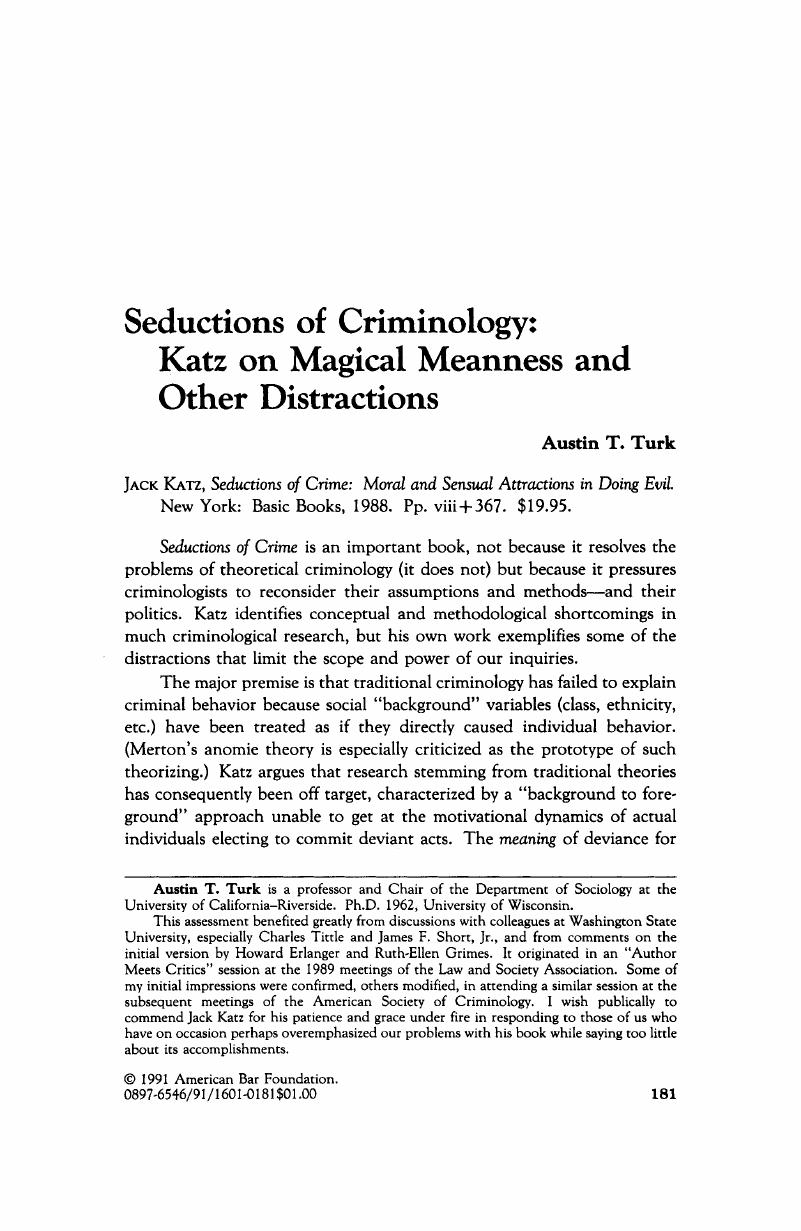Published online by Cambridge University Press: 27 December 2018

1 For a more extended discussion, see Austin T. Turk,” Criminology and Socio-legal Studies,” in Anthony N. Doob & Edward L. Greenspan, eds., Perspectives in Criminal Law 309–34 (Aurora, Ont.: Canada Law Book, Inc., 1984).Google Scholar
2 Explaining behavior and explaining the labeling of people indeed are different projects. Austin T. Turk, Criminality and Legal Order (Chicago: Rand McNally, 1969). This does not mean that behavior and labeling are unrelated or that theories of labeling have nothing to do with explaining behavior. Behavior is affected by labeling; labeling is affected by structured inequalities. To explain such outcomes as varying rates or patterns of deviant behavior, the task is to specify interactions among labeling, behavior, and structured inequalities.Google Scholar
3 E.g., James Q. Wilson & Richard J. Herrnstein, Crime and Human Nature (New York: Simon & Schuster, 1985).Google Scholar
4 For a critical analysis rejecting such implications, see Currie, Elliott, Confronting Crime: An American Challenge (New York: Pantheon, 1985).Google Scholar
5 E.g., David Matza, Becoming Deviant (Englewood Cliffs, N.J.: Prentice-Hall, 1969); Michael Phillipson, Understanding Crime and Delinquency (Chicago: Aldine, 1974).Google Scholar
6 Francis T. Cullen, Rethinking Crime and Deviance Theory: The Emergence of a Structuring Tradition (Totowa, N.J.: Rowman &. Allanheld, 1983).Google Scholar
7 Cf. James F. Short, Jr.,” The Level of Explanation Problem in Criminology,” in Robert F. Meier, ed., Theoretical Methods in Criminology 51–72 (Newbury Park, Cal.: Sage Publications, 1985); id.,” Exploring Integration of Theoretical Levels of Explanation: Notes on Gang Delinquency,” in Steven F. Messner, Marvin D. Krohn, &. Allen E. Liska, eds., Theoretical Integration in the Study of Deviance and Crime: Problems and Prospects 243–59 (Albany: State University of New York Press, 1989), on the utility of “microsocial” analysis in integrating “macrosocial” and “individual” levels of explanation. The implication is that intragroup and intergroup interaction patterns need to be specified in order to link structural (“background”) and individual (“foreground”) explanations of human behavior.Google Scholar